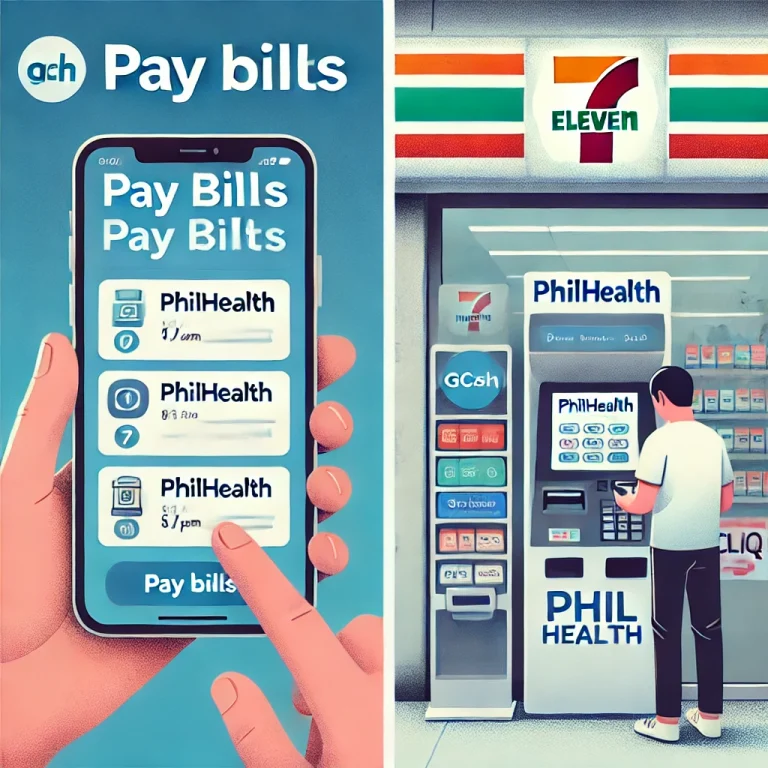Vosita vs. Other Appointment Scheduling Software: Key Differences
In the fast-paced world of modern business, efficient appointment scheduling is no longer a luxury—it’s a necessity. Whether you’re a healthcare provider juggling patient consultations, a consultant coordinating client meetings, or a service-based entrepreneur managing bookings, the right scheduling software can transform chaos into streamlined operations. According to recent industry reports, the global appointment scheduling software market is projected to grow from $393.4 million in 2025 to nearly $1 billion by 2032, driven by a CAGR of 9.7%. This surge reflects the increasing demand for tools that automate bookings, reduce no-shows, and integrate seamlessly with existing workflows.
Among the crowded field of solutions, Vosita.com stands out as a specialized platform tailored primarily for healthcare providers. Launched as a web- and app-based provider directory, Vosita connects patients with doctors across specialties, enabling easy online bookings for both in-office and virtual visits. What sets Vosita apart is its focus on affordability, deep integrations with medical systems, and features like verified patient reviews and SEO optimization to boost provider visibility. But how does it stack up against general-purpose giants like Calendly, Acuity Scheduling, and Setmore? In this comprehensive article, we’ll dive deep into Vosita’s core offerings, compare it head-to-head with these competitors, and highlight the key differences that could make or break your choice. By the end, you’ll have a clear roadmap to selecting the tool that aligns with your business needs.
What is Appointment Scheduling Software?
At its core, appointment scheduling software is a digital tool designed to automate the booking process, eliminating the back-and-forth emails and phone calls that plague traditional methods. These platforms typically allow users to create personalized booking pages, sync with calendars (like Google Calendar or Outlook), send automated reminders via email or SMS, and even process payments. Advanced options include team scheduling for multiple staff members, custom intake forms, and analytics to track no-show rates or booking trends.
For businesses, the benefits are tangible: reduced administrative overhead, improved customer satisfaction, and higher revenue through minimized missed appointments. In healthcare, where compliance and patient data security are paramount, these tools often incorporate HIPAA-compliant features. General-purpose software like Calendly excels in simplicity for sales teams or freelancers, while specialized ones like Vosita prioritize medical-specific integrations. As we explore Vosita and its rivals, keep in mind that the “best” tool depends on your industry, team size, and budget—there’s no one-size-fits-all solution.
Spotlight on Vosita: A Healthcare-Centric Powerhouse
Vosita isn’t just another scheduling app; it’s a comprehensive ecosystem built to bridge the gap between patients and providers in the healthcare sector. Founded with a mission to make quality care accessible, Vosita operates as both a directory and booking platform, allowing patients to search for in-network doctors, read verified reviews, and book appointments with a few clicks. Providers, in turn, can list their services, manage availability, and leverage built-in telemedicine options—all while syncing data effortlessly.
Key Features of Vosita
- Online Booking and Directory Integration: Patients can filter providers by specialty, location, insurance, and languages spoken. This discovery aspect is unique, turning Vosita into a patient acquisition tool rather than just a scheduler.
- Seamless EMR and PMS Integrations: Vosita shines with two-way syncs to systems like Athenahealth, Medisoft, and Lytec. If a patient books online, the appointment appears instantly in your practice management software (PMS), preventing double-bookings. Conversely, internal changes reflect in Vosita, reducing manual data entry.
- Appointment Reminders and No-Show Reduction: Automated SMS and email notifications, customizable confirmation messages, and even post-visit review prompts help maintain full schedules.
- Telemedicine and Virtual Visits: Built-in video support for remote consultations, which gained traction post-COVID, with free access during the pandemic to encourage adoption.
- Reputation Management and SEO: Providers get tools for online reviews, referral lists, and search engine optimization to attract new patients organically.
- Organization Listings for Groups: Recent updates (Vosita 2.1) allow medical groups and Accountable Care Organizations (ACOs) to create unified profiles, enabling patients to select providers by sub-specialty.
- User-Friendly Interface: Praised for its intuitive design, Vosita ensures both patients and providers can navigate effortlessly, with mobile app support for on-the-go management.
Pricing and Accessibility
Vosita’s pricing is a standout: it’s positioned as the most affordable option for telemedicine and scheduling, often undercutting competitors while offering robust features. During the COVID-19 era, it provided full services for free, including SEO and reminders, to support providers. Today, plans start low, with scalability for solo practitioners to large groups, and no hidden fees for core integrations.
Vosita’s healthcare focus makes it ideal for doctors, clinics, and therapists who need compliant, patient-centric tools. But for non-medical users, its specialized features might feel overkill. Let’s see how it fares against broader alternatives.
Comparing Vosita to Top Competitors
To uncover the key differences, we’ll pit Vosita against three popular alternatives: Calendly (the simplicity king for professionals), Acuity Scheduling (a versatile all-rounder with payment prowess), and Setmore (a free-tier favorite for small teams). These were selected based on 2025 market leaders from sources like Capterra and G2, where they dominate user reviews for ease of use and reliability. We’ll break it down by features, pricing, integrations, and use cases.
Vosita vs. Calendly: Specialized Depth vs. Universal Simplicity
Calendly has long been the go-to for effortless meeting coordination, boasting over 10 million users worldwide. It’s beloved for its “set it and forget it” approach: share a link, and invitees pick from your availability, with automatic calendar syncs and time-zone handling. However, it’s geared toward sales, recruiting, and general business, lacking Vosita’s medical-specific tools.
| Feature | Vosita | Calendly |
| Core Booking | Patient directory search + booking; supports in-office/telemedicine | Simple link-based scheduling; one-on-one or group meetings |
| Integrations | EMR/PMS (e.g., Medisoft, Athenahealth); two-way sync to avoid doubles | Google/Outlook calendars; Zoom/Slack; no native EMR support |
| Reminders & Reviews | Automated SMS/email; verified patient reviews; SEO boosts | Email/SMS reminders; basic workflows, no built-in reviews |
| Payments | Integrated for consultations; insurance verification hints | Stripe/PayPal; add-ons for advanced invoicing |
| Compliance | HIPAA-ready; healthcare-focused security | General GDPR; not optimized for HIPAA |
| Pricing | Affordable tiers starting low; free COVID-era features | Free basic; Pro at $20/user/month; Enterprise custom |
| Best For | Healthcare providers seeking patient acquisition | Freelancers, sales teams needing quick, no-frills scheduling |
Key Differences: Vosita’s directory and EMR integrations make it a growth engine for medical practices—imagine new patients discovering you via search, then booking seamlessly into your Medisoft calendar. Calendly, while lightning-fast to set up (under 5 minutes), doesn’t facilitate discovery or handle medical compliance, potentially requiring add-ons that inflate costs. If you’re in healthcare, Vosita reduces no-shows by 30-50% through targeted reminders and reviews; Calendly shines in non-regulated industries where speed trumps depth. No direct head-to-head comparisons exist, but Vosita’s niche focus gives it an edge for clinics, while Calendly’s broad appeal suits diverse users.
Vosita vs. Acuity Scheduling: Patient Ecosystems vs. Business Versatility
Acuity Scheduling (now part of Squarespace) is a powerhouse for service pros, offering customizable forms, client portals, and payments in one sleek package. It’s popular among coaches, salons, and therapists for its embeddable widgets and multi-location support. Like Vosita, it handles reminders and calendars, but its generalist nature means less emphasis on healthcare discovery.
| Feature | Vosita | Acuity Scheduling |
| Core Booking | Directory-driven; specialty/insurance filters | Custom types/locations; intake forms for client details |
| Integrations | Deep medical (Lytec, Medisoft); calendar sync | Google/Outlook; Zoom/PayPal; WordPress embeds; limited EMR |
| Reminders & Reviews | SMS/email + post-visit reviews; reputation tools | Email/SMS; client portals for self-management, no native reviews |
| Payments | Built-in for telehealth; insurance-friendly | Robust invoicing/subscriptions via Stripe/Square |
| Compliance | HIPAA; secure patient data handling | HIPAA on higher plans; general privacy tools |
| Pricing | Cost-effective; scalable for groups | Emerging $16/month; Powerhouse $45/month (HIPAA add-on) |
| Best For | Medical groups needing visibility and sync | Service businesses with complex client onboarding |
Key Differences: Vosita’s provider directory acts as a marketing tool, helping practices attract local patients who might otherwise call competitors— a feature Acuity lacks, focusing instead on internal efficiency. Acuity excels in customization (e.g., CSS for branding) and payments, making it ideal for non-medical services like wellness coaching where intake forms gather detailed client info upfront. For HIPAA-sensitive environments, both comply, but Vosita’s out-of-the-box medical integrations save hours on setup. Users report Acuity’s steeper learning curve for advanced features, while Vosita’s interface is lauded for seamlessness in high-volume practices. If patient acquisition is your goal, Vosita wins; for payment-heavy ops, Acuity edges ahead.
Vosita vs. Setmore: Niche Affordability vs. Free-Tier Flexibility
Setmore is a crowd-pleaser for small businesses, offering a generous free plan with unlimited appointments for up to four users. It’s straightforward for salons, tutors, or consultants, with staff scheduling and basic reporting. Vosita, while also budget-friendly, targets healthcare with more specialized depth.
| Feature | Vosita | Setmore |
| Core Booking | Searchable directory; virtual/in-person | Custom pages; group/class bookings |
| Integrations | EMR-focused (Athenahealth); two-way PMS sync | Google/Outlook; QuickBooks; no deep medical ties |
| Reminders & Reviews | Automated + SEO/review system | Email/SMS; basic notifications, add-on reviews |
| Payments | Integrated; telehealth-optimized | Stripe/PayPal; subscription support |
| Compliance | HIPAA standard | GDPR; HIPAA via premium add-ons |
| Pricing | Low-cost entry; value-packed | Free for basics; Pro $12/user/month |
| Best For | Healthcare discovery and compliance | Budget-conscious small teams in services |
Key Differences: Setmore’s free tier is unbeatable for startups testing the waters, with easy mobile apps and resource booking (e.g., rooms or equipment). However, it falls short on Vosita’s patient directory and EMR syncs, which are critical for avoiding errors in medical settings. Vosita’s telemedicine and insurance filters provide a competitive moat for providers, while Setmore’s generality suits non-healthcare users better. Reviews highlight Setmore’s occasional glitches in high-traffic scenarios, whereas Vosita’s stability shines in regulated environments. For cost savings without sacrificing healthcare smarts, Vosita pulls ahead.
Key Differences: A High-Level Breakdown
Across these matchups, patterns emerge:
- Industry Focus: Vosita is healthcare-exclusive, with directory discovery and EMR integrations that general tools like Calendly or Setmore can’t match. Acuity comes closest but prioritizes services over medicine.
- Patient/Provider Ecosystem: Vosita builds communities via reviews and SEO, driving organic growth—absent in competitors focused on solo bookings.
- Compliance and Security: Built-in HIPAA makes Vosita a safe bet for sensitive data; others require upgrades.
- Pricing Edge: Vosita’s affordability (often 20-50% less than Acuity’s premium tiers) democratizes advanced features.
- Scalability: Vosita excels for groups/ACOs with organization listings; Setmore and Calendly handle teams but lack medical depth.
In essence, if your world is white coats and waiting rooms, Vosita streamlines like no other. For broader applications, the others offer flexibility at the cost of specialization.
Conclusion: Choosing the Right Fit for Your Scheduling Needs
Appointment scheduling software is the unsung hero of efficient operations, and Vosita carves a compelling niche in healthcare with its blend of discovery, integration, and affordability. While Calendly wins on sheer simplicity, Acuity on customization, and Setmore on entry-level access, Vosita’s tailored approach could revolutionize patient engagement for providers—reducing no-shows, boosting visibility, and syncing flawlessly with your daily tools.
Ultimately, evaluate based on your sector: Test free trials (Vosita offers easy onboarding), consider integrations, and weigh long-term ROI. In a market exploding with options, Vosita isn’t just competing—it’s redefining accessible care. Ready to book smarter? Explore Vosita at go.vosita.com and see the difference for yourself. Your schedule (and sanity) will thank you.





